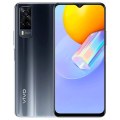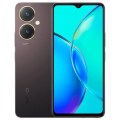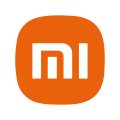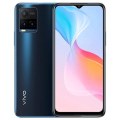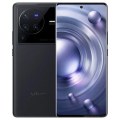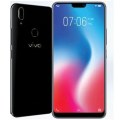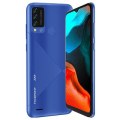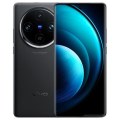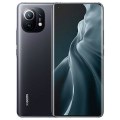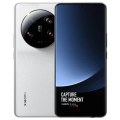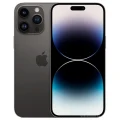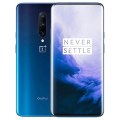- Awesome page
- Latest Mobile
- Smartphones
- Vivo Y20s
Vivo Y20s
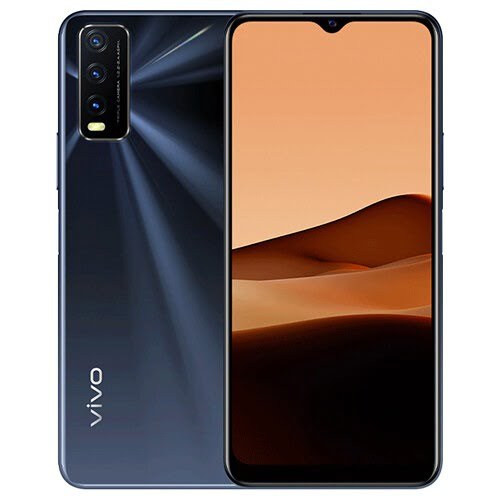


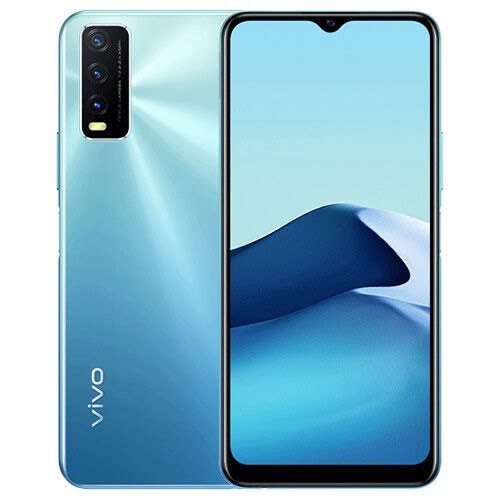
Vivo Y20s Price in Bangladesh
The Vivo Y20s Price in Bangladesh is BDT 20,000. This stylish smartphone features a 6.51-inch IPS LCD capacitive touchscreen with a screen-to-body ratio of approximately 81.6%. It is powered by an Octa-core processor (4×1.8 GHz Kryo 240 & 4×1.6 GHz Kryo 240) and the Qualcomm SM4250 Snapdragon 460 (11 nm) chipset. The Vivo Y20s comes with options of 4GB or 6GB of RAM and offers 128GB of internal storage, expandable via a dedicated microSDXC slot.
In terms of photography, it features a dual-camera setup on the back with a 13 MP main camera and a 2 MP secondary camera, while an 8 MP front camera handles selfies. The device is equipped with a robust 5000mAh Li-polymer battery, ensuring long-lasting performance. The Vivo Y20s Price in Bangladesh makes it an appealing option for users seeking a reliable device with solid specifications.
Specifications
General
| Model | Vivo Y20s |
| Announced | 19 October, 2024 |
| Released | 19 October, 2024 |
| Status | Available |
| Official price | ৳20,000 |
Design
| Dimensions | 164.4 x 76.3 x 8.4 mm (6.47 x 3.00 x 0.33 in) |
| Weight | 192.3 g (6.77 oz) |
| Colors |
Purist Blue, Obsidian Black, Nebula Blue |
Network
| Technology | GSM / HSPA / LTE |
| 2G Network |
GSM 850 / 900 / 1800 / 1900 - SIM 1 & SIM 2 |
| 3G Network |
HSDPA 850 / 900 / 2100 |
| 4G Network |
1, 3, 5, 7, 8, 18, 19, 20, 26, 28, 38, 39, 40, 41 1, 3, 5, 7, 8, 38, 40, 41 |
| GPRS <strong>GPRS</strong> (General Packet Radio Service) is a packet oriented mobile data service on the 2G and 3G cellular communication system's global system for mobile communications (GSM), Generally, GPRS is used for the purpose of wireless data transfer, such as sharing pictures and videos or browsing the Internet via a mobile phone connection. | |
| EDGE <strong>EDGE</strong> (Enhanced Data GSM Environment) is a wireless network technology generally considered the next step in the 2G network offers data transfer rates up to four times faster than ordinary GSM networks, Generally, EDGE is used for the purpose of wireless data transfer, such as sharing pictures and videos or browsing the Internet via a mobile phone connection. | |
| Speed | HSPA 42.2/5.76 Mbps, LTE-A |
Display
| Display Type <strong>Display Technology => </strong> A number of display technologies and types used in mobile phones => TFT (Thin Film Transistor), IPS (In-Place Switching), OLED (Organic Light Emitting Diode), AMOLED (Active-Matrix Organic Light-Emitting Diode), Super AMOLED (an even advanced version of AMOLED), Resistive Touchscreen (Resistive touchscreens contain two layer of conductive material with a very small gap between them which acts as a resistance), Capacitive Touchsceen (Capacitive touchscreen technology consists of a layer of glass coated with a transparent conductor) | IPS LCD |
| Size | 6.51 inches, 102.3 cm2 (~81.6% screen-to-body ratio) |
| Resolution | 720 x 1600 pixels, 20:9 ratio (~270 ppi density) |
Camera
Main camera
| Camera Setup | Triple |
| Primary <strong>Camera</strong> is able to capture photographs and usually videos, The most important characteristics of a camera are the resolution (measured in megapixels), lens focus type (fixed or automatic), higher megapixel cameras are known to capture higher quality photos, but not always a good measurement of the photos quality. |
13 MP, f/2.2, (wide), PDAF 2 MP, f/2.4, (macro) 2 MP, f/2.4, (depth) |
| Features |
LED flash, HDR |
| Video | 1080p@30fps |
Selfie camera
| Camera Setup | Single |
| Primary <strong>Camera</strong> is able to capture photographs and usually videos, The most important characteristics of a camera are the resolution (measured in megapixels), lens focus type (fixed or automatic), higher megapixel cameras are known to capture higher quality photos, but not always a good measurement of the photos quality. | 8 MP, f/1.8, (wide) |
| Video | 1080p@30fps |
Hardware
| Chipset <strong>Chipset</strong> is a group of integrated circuits designed to perform one or a more dedicated functions, often with real time computing constraints, Popular smartphones are equipped with more advanced embedded chipsets that can do many different tasks depending on their programming. | Qualcomm SM4250 Snapdragon 460 (11 nm) |
| CPU <strong>CPU</strong> (Central Processing Unit) mostly known as processors, CPU processes instructions in order to carry out certain functions that make your device operate properly. Processors are often described as the brain of computers, smartphones and tablets, Smartphones and tablets rely on processors to carry out their every task, Processors are an incredibly important factor in selecting any type of computing device, including your smartphone. | Octa-core (4x1.8 GHz Kryo 240 & 4x1.6 GHz Kryo 240) |
| GPU <strong>GPU</strong> (Graphics Processing Unit) is a single-chip processor designed to rapidly manipulate and alter memory to accelerate the creation of images in a frame buffer intended for output to a display, This includes things such as lighting effects, object transformations, and 3D motion. | Adreno 610 |
| RAM (Memory) <strong>RAM</strong> (Random Access Memory) is a type of computer memory that can be accessed randomly, any byte of memory can be accessed without touching the preceding bytes that allows information to be stored and accessed quickly from random locations. RAM is the most common type of memory found in computer systems, smartphones, tablets and other electronic devices. | 4/6 GB |
| Internal Storage <strong>Internal Storage</strong> is a data storage space (flash memory) mostly used in smartphones, tablets and other electronic devices where operating system, apps, music, photos, videos, files and other user data Is stored. | 128 GB |
| Sensors <strong>Sensors</strong> are electronic components that detects and responds to some type of input from the physical environment. The specific input could be light, heat, motion, moisture, pressure and location, The output is generally a signal that is converted to use in computing systems, a location sensor, such as a GPS receiver is able to detect current location of your electronic device. |
Fingerprint (side-mounted), accelerometer, proximity, compass |
Connectivity
| Bluetooth <strong>Bluetooth</strong> is a wireless communications technology for exchanging data between mobile phones, headsets, computers and other network devices over short distances without wires, Bluetooth technology was primarily designed to support simple wireless networking of personal consumer devices. | 5.0, A2DP, LE |
| Infrared <strong>Infrared</strong> connectivity is an old wireless technology used to connect two electronic devices. It uses a beam of infrared light to transmit information and so requires direct line of sight and operates only at close range. | |
| USB | microUSB 2.0, USB On-The-Go |
| GPS <strong>GPS</strong> The Global Positioning System is a satellite-based radio navigation system, GPS permits users to determine their position, velocity and the time 24 hours a day, in all weather, anywhere in the world, In order to locate your position, your device or GPS receiver must have a clear view of the sky. | Yes, with A-GPS, GLONASS, GALILEO, BDS |
| NFC <strong>NFC</strong> (Near field communication) is a set of standards for smartphones and similar devices to establish peer-to-peer radio communications with each other by touching them together or bringing them into proximity, usually no more than a few inches. |
Battery
| Battery Type <strong>Battery Type => </strong> Cell phones run on various kinds of batteries depending on the manufacturer, phone size or shape and features. There are basically four types of cell phone batteries => Lithium Polymer, Lithium Ion, Nickel Metal Hydride and Nickel Cadmium. | Non-Removable Li-Po |
| Capacity <strong>Battery Capacity</strong> is a measure (typically in Amp-hr) of the charge stored by the battery, and is determined by the mass of active material contained in the battery. The battery capacity represents the maximum amount of energy that can be extracted from the battery under certain conditions. | 5000 mAh |
| Charging Charging | Fast charging 18W |
Vivo Y20s Review You Can’t Miss
Introduction to the Vivo Y20s
In the fast-evolving world of smartphones, Vivo has consistently made its mark with innovative and user-centric devices. The Vivo Y20s is no exception. This smartphone, aimed at mid-range users, promises a blend of style, performance, and affordability. In this review, we’ll dissect every aspect of the Vivo Y20s to determine if it lives up to the hype. Whether you’re a tech enthusiast, a smartphone user, or a gadget reviewer, this comprehensive guide will give you all the insights you need.
Design and Build Quality
The first thing you notice about the Vivo Y20s is its sleek and stylish design. The smartphone boasts a glossy finish that feels premium in hand. Made from high-quality materials, the build quality is impressive for its price range. The curved edges and ergonomic design ensure a comfortable grip, making it easy to use with one hand.
On the back, the camera module is strategically placed to avoid any wobbling when the phone is laid flat. The front houses a large screen with minimal bezels, giving it a modern look. Vivo has clearly put thought into the aesthetics, making the Y20s a visually appealing device.
The buttons are tactile and responsive, adding to the overall user experience. The rear-mounted fingerprint sensor is quick and conveniently located. In summary, the Vivo Y20s offers a solid design and build quality that rivals more expensive smartphones.
Display and Performance
When it comes to display, the Vivo Y20s features a 6.51-inch IPS LCD screen with a resolution of 720 x 1600 pixels. While it may not be Full HD, the display quality is decent for everyday use. Colors are vibrant, and the brightness levels are satisfactory, making it usable even under direct sunlight.
Performance-wise, the Vivo Y20s is powered by the Qualcomm Snapdragon 460 processor, coupled with 4GB of RAM. This combination ensures smooth performance for day-to-day tasks like browsing, social media, and video streaming. For gaming enthusiasts, the phone handles games like PUBG Mobile and Call of Duty reasonably well, although it may struggle with more graphics-intensive titles.
Multitasking is efficient, thanks to the ample RAM and optimized software. Overall, the performance of the Vivo Y20s is commendable for a mid-range smartphone, providing a balanced experience for both casual users and gamers.
Camera Capabilities
One of the standout features of the Vivo Y20s is its camera setup. The smartphone is equipped with a triple-camera system on the back, consisting of a 13MP primary sensor, a 2MP macro lens, and a 2MP depth sensor. The front houses an 8MP selfie camera.
In good lighting conditions, the primary camera captures detailed and vibrant photos. The AI enhancements help in optimizing the settings for different scenes, making it a versatile shooter. The macro lens allows for close-up shots, while the depth sensor adds a pleasing bokeh effect to portraits.
Low-light performance is decent but not exceptional. The Night Mode helps to some extent, but the images can appear grainy. The selfie camera, on the other hand, delivers sharp and clear selfies, perfect for social media sharing.
Video recording capabilities are adequate, with support for 1080p videos at 30fps. The electronic image stabilization (EIS) ensures smooth footage, although it may struggle with fast-moving subjects. All in all, the Vivo Y20s offers a robust camera experience for its price point.
Battery Life and Charging
Battery life is often a critical factor for smartphone users, and the Vivo Y20s does not disappoint. The phone packs a massive 5000mAh battery, which easily lasts a full day with moderate to heavy usage. Whether you’re streaming videos, playing games, or browsing the web, the battery holds up well.
The smartphone supports 18W fast charging, which is a welcome addition. It takes approximately 2 hours to charge from 0 to 100%, which is reasonable for a battery of this capacity. The power-efficient Snapdragon 460 processor also contributes to the excellent battery performance, ensuring you stay connected throughout the day.
In standby mode, the battery life is impressive, losing minimal charge overnight. This makes the Vivo Y20s a reliable companion for long trips or days when you can’t access a charger. In summary, the battery life and charging capabilities of the Vivo Y20s are among its strong suits.
Software and User Experience
The Vivo Y20s runs on Funtouch OS 10.5 based on Android 10. The user interface is clean and intuitive, offering a pleasant user experience. The OS comes with several customization options, allowing you to personalize the phone to your liking.
Pre-installed apps, commonly known as bloatware, are minimal, ensuring a clutter-free experience. The software is optimized to make the most of the hardware, providing smooth and lag-free performance. Navigating through the menus is a breeze, and the overall user interface is visually appealing.
One of the highlights is the Game Mode, which enhances the gaming experience by allocating resources efficiently and blocking notifications during gameplay. The split-screen feature is also handy, allowing you to multitask effortlessly. In conclusion, the software and user experience on the Vivo Y20s are well thought out, making it a joy to use.
Comparison with Competitors
In the crowded mid-range smartphone market, the Vivo Y20s faces stiff competition. However, it holds its own against rivals like the Xiaomi Redmi Note 9 and the Samsung Galaxy A21s. While each phone has its strengths, the Vivo Y20s stands out with its design, battery life, and user-friendly software.
Compared to the Redmi Note 9, the Vivo Y20s offers a more polished user interface and better battery performance. The Samsung Galaxy A21s, on the other hand, has a slightly better display resolution but falls short in terms of battery life and software optimization.
In terms of camera performance, all three phones are fairly competitive, with each having unique features. However, the Vivo Y20s’ AI enhancements give it a slight edge in versatility. Overall, the Vivo Y20s is a well-rounded smartphone that competes effectively in its price range.
Conclusion
The Vivo Y20s is a testament to Vivo’s commitment to delivering quality smartphones at an affordable price. It combines a stylish design, robust performance, and a user-friendly interface to offer a compelling package for mid-range users. Whether you’re a tech enthusiast, a smartphone user, or a gadget reviewer, the Vivo Y20s is worth considering.
Its key highlights include excellent battery life, a versatile camera setup, and a smooth user experience. While there are areas for improvement, such as the display resolution and low-light camera performance, the overall value proposition of the Vivo Y20s is strong.
In summary, the Vivo Y20s is a solid choice for anyone looking for a reliable and feature-rich smartphone without breaking the bank. We encourage you to share your thoughts and experiences with the Vivo Y20s in the comments below and engage with our tech community.
